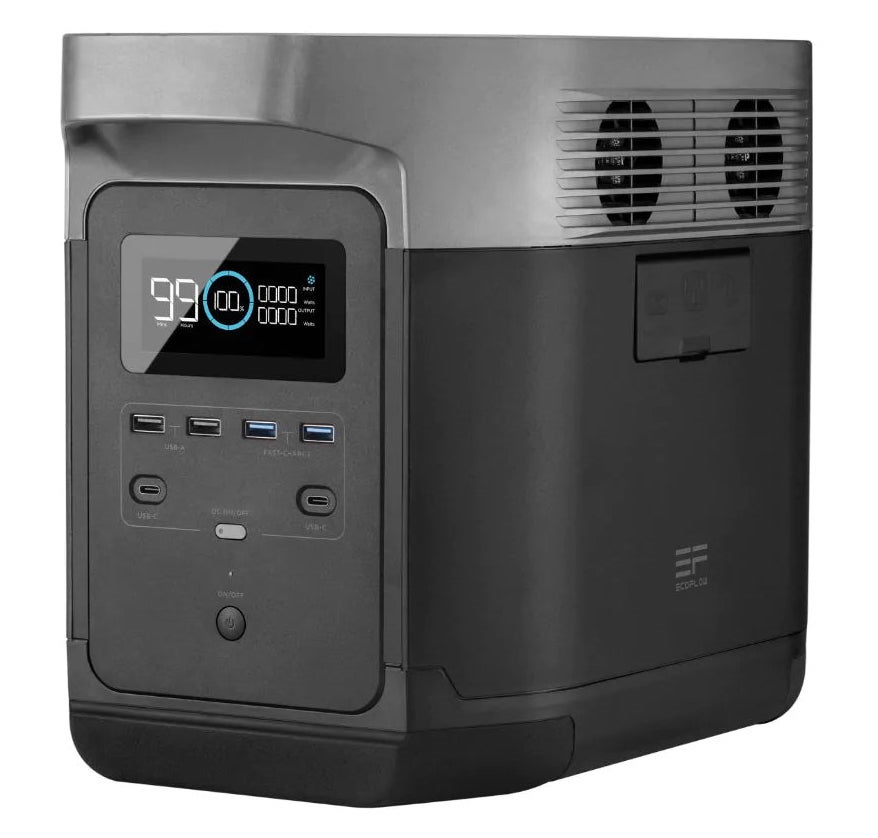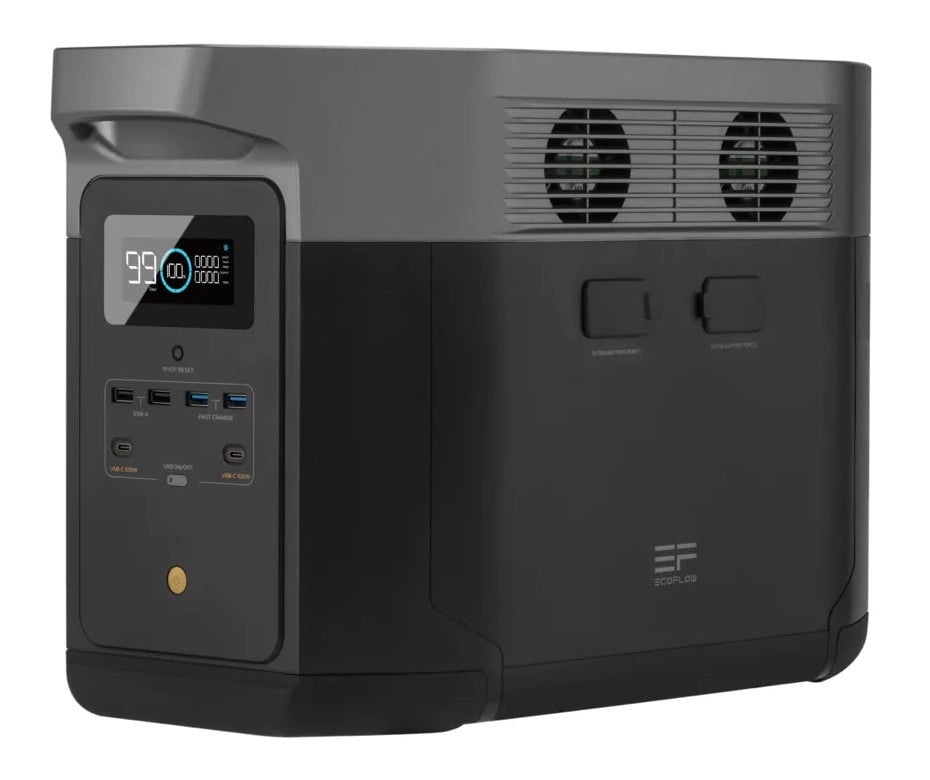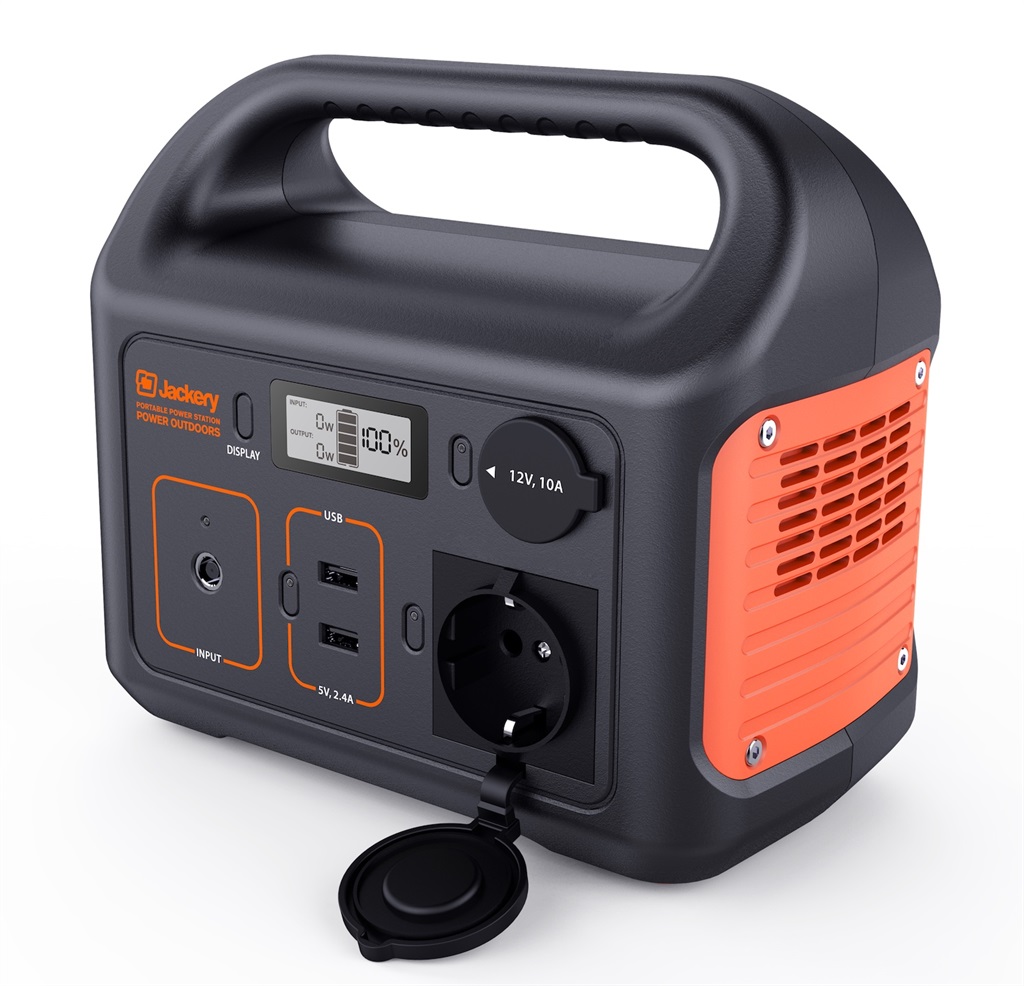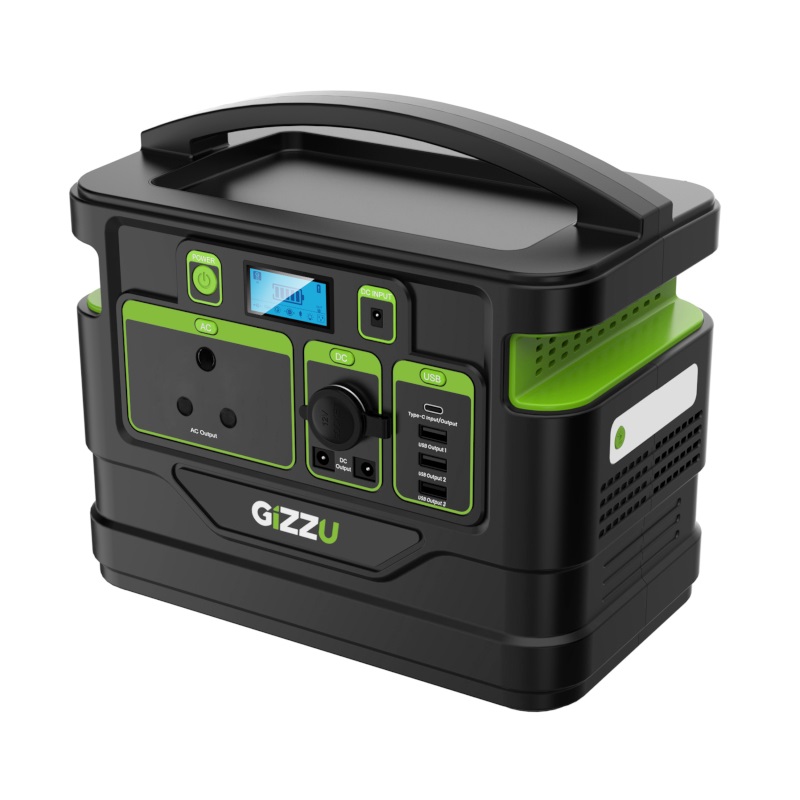Home › Forums › NATS NIBBLES › How 6 portable power stations available in SA – which cost between R3k and R33k – compare
- This topic is empty.
Viewing 1 post (of 1 total)
-
AuthorPosts
-
2023-01-30 at 16:38 #391302
 Nat QuinnKeymaster
Nat QuinnKeymaster- Portable power stations won’t solve all your load shedding woes and are best viewed as giant battery packs.
- Most don’t operate as always-on, pass-through devices like inverters that kick in automatically.
- But they might keep your laptop, WiFi, and other mains-powered household devices running through power cuts.
- Some also charge using portable solar panels – and they’re also handy if you’re inclined to do historically-powerless things like camping.
- If you must wheel your power bank around the house during load shedding, here’s how the locally available options compare.
Portable power stations are growing in popularity worldwide – and for the last few years, they’ve been the subject of mass-marketing campaigns, particularly on social media.
Much of the advertising and availability has been in regions where their use cases feel somewhat shoe-horned – like micro-influencers paid to paint post-apocalyptic scenarios such as a freak storm taking out a power line. Or pitch them as the perfect accessory when you have no other way to power the projector and popcorn machine for your seasonal outdoor cinema.
But on reflection, this isn’t as odd as it may seem. Although South Africa may be a global electricity basket case at the moment, ripe for any kind of household electrical assistance, these portable power stations were never meant to solve the woes of a permanently ailing grid.
These wheelable blocks – the biggest of which weigh about the same as three bags of charcoal briquettes – can accept standard plugs and some even power bigger devices like power tools, laptops, or even televisions.
Some are also rechargeable through portable solar power panels and have things like apps or digital displays that can tell you exactly how much electricity your air fryer is drawing and how slowly the cloudy winter sky is replenishing the giant internal battery.
Although they’re not designed to run non-stop through South Africa-level load shedding and will be less cost-effective and long-term reliable than a traditional inverter, they are pretty handy tools to have lying around.
The slew of products now entering the market also means there are several items now vying for your credit card details – and which to go for will likely rest on how you intend to use it.
Significant points of difference between competitors are often somewhat frivolous add-ons given the severity of our electricity needs, like additional AC and USB outputs, carrying handles, LCDs, built-in torches, ruggedness, and nice colour schemes.
For South African purposes, the primary point of difference will likely be how long the thing will actually last before the battery conks out – also known in the battery world as cycles.
Most locally-available portable power stations will give you around 500 cycles, which is a complete charge and discharge, before they start to wane.
With this in mind, it’s likely worth investing a little more in bigger batteries – a power station that only lasts a single stage of load shedding before needing a recharge, for example, will only survive about two years under current load shedding circumstances.
If your bigger, more expensive battery means you’re only charging your power station every two or three load shedding stages, it’ll likely last a little longer.
You’re also paying a bit of a premium for their convenience and influencer-worthy novelty factor. Given that they were initially built for freak storms, outdoor cinemas, and bi-annual camping trips, you’re probably better off sticking to an original inverter setup if portability and convenience aren’t essential.
And most also aren’t built for always-on pass-through functionality like many inverters, so you’ll have to plug in when the power goes off.
Even so, it’s hard to beat being able to wheel a battery around the house with easy AC plugs – particularly if you spontaneously want to keep the beer fridge cold or do a little computer work away from your desk.
Here’s how several portable power station options currently available in South Africa compare:
EcoFlow DELTA

The EcoFlow DELTA delivers some serious clout at a reasonably competitive price point when it comes to keeping you powered up during blackouts. It has four AC outputs, charges up to 11 devices at once, and supports anything from small appliances to power tools. Its 1260Wh capacity is impressive. And it claims a recharge time from 0-80% in under one hour, perfect for those days of relentless Stage 6 load shedding. Optional EcoFlow solar panels and car accessories enable you to charge up when the power is out.
Capacity: 1260Wh
AC outlets: 4 (SA plugs)
Weight: 14kg
Dimensions: 40 x 21 x 27 cm
Battery cycles: 800 Cycles to 80%+ capacity
Cost: RRP: R26,999; lowest online price found: R23,900.
EcoFlow DELTA Max 1600

For those with a bit more change to spare, the Max version of EcoFlow’s DELTA takes things up a level. It’ll cost you at least R6,000 more, but you get a capacity boost to 1612Wh – more if you go for the 2000 version. With this, it claims to easily power up devices and home appliances like fridges and microwaves up to 3000w. It, too, sports fast dual charging and can connect to solar panels.
Capacity: 1612Wh
AC outlets: 4 (US plugs)
Weight: 22kg
Dimensions: 49.7 x 24.2 x 30.5 cm
Battery cycles: 500 Cycles to 80%+ capacity
Cost: RRP: R33,999; lowest online price found: R30,300.
Jackery Explorer 1000

The Jackery Explorer 1000 has a 1002Wh lithium battery and claims to be one of the most powerful on the market. It’s available in South Africa – with South African plugs – and is highly portable at just 10kgs and with a large carry handle. It can charge mainstream electronics and household items through AC plugs and USB-A and USB-C ports, and you can recharge it using your car’s battery or optional solar panels.
Capacity: 1002Wh
AC outlets: 2 (SA plugs)
Weight: 10kg
Dimensions: 33,3 x 23,3 x 28,3 cm
Battery cycles: 500 Cycles to 80%+ capacity
Cost: RRP: R22,950; lowest online price found: R22,800.
Jackery Explorer 250

The smaller, cheaper version of the Jackery Explorer 1000 is the Explorer 250. You’ll save a lot on initial capital outlay, which means you lose a few features and a lot of capacity and can charge fewer devices at any one time. Still, with the ability to power a television for three hours and keep your laptop, phone, and fibre running, it’s a good option for Stage 2 optimists. And it weighs just 3kg if you’re considering taking it places. As with the Explorer 1000, you can also charge this power station through optional solar panels.
Capacity: 257Wh
AC outlets: 1 (SA plugs)
Weight: 3.1kg
Dimensions: 14 x 23 x 20 cm
Battery cycles: 500 Cycles to 85%+ capacity
Cost: RRP: R6,950; lowest online price found: R6,500.
Gizzu 518Wh

Gizzu is a popular accessory brand that sells a range of load shedding-related items, including portable power stations. The items currently available on local markets are generally lower capacity than high-end power stations, but they’re also considerably cheaper. The highest capacity Gizzu power station is its 518Wh option. It has one three-prong AC plug that can power a bar fridge, router, or small appliances. Like others on the market, it also has an optional solar panel for recharging off the mains. A big plus point – the Gizzu 518Wh claims a lifespan of 1,000 battery cycles.
Capacity: 518Wh
AC outlets: 1 (SA plugs)
Weight: 5.14kg
Dimensions: 26.4 x 23.4 x 16.3 cm
Battery cycles: 1000 Cycles
Cost: Lowest online price found: R7,890.
Gizzu 155Wh

The smallest and cheapest of Gizzu’s portable power stations is only 155Wh, but it’s a good budget option for keeping routers and laptops alive during blackouts. It has one AC plug and three USB ports and is lightweight and rugged. Although it’s only a few steps up from a juiced-up battery pack, it’s handy for emergency mains-style charging.
Capacity: 155Wh
AC outlets: 1 (SA plugs)
Weight: 1.89kg
Dimensions: 20.4 x 9.1 x 18.7 cm
Battery cycles: 500 Cycles
Cost: Lowest online price found: R2,950.
-
AuthorPosts
Viewing 1 post (of 1 total)
- You must be logged in to reply to this topic.
